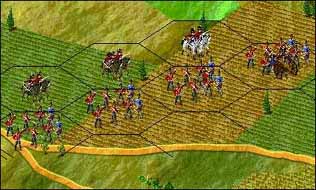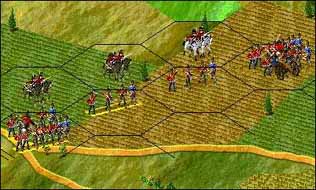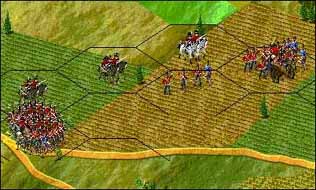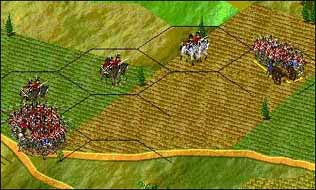Extended Line and Cavalry
In this next scenario 4 battalions of the Guards have gone into double extended line extended
with cannon on their Flank and Cavalry to the rear.

Now let us suppose the French threaten the formation by bringing up cavalry to charge weak
looking formation, expecting to over run the infantry, forcing them onto the cavalry and maybe
turning the disordered formation on mass. The British officer in charge orders the front ranks to
fire, then recalls the inner two units.

Now the second rank can fire (remember Zulu), after this the second rank is recalled. The two
battalions on the left then form square. (Over 1000 men in square even the French would not charge
that, remember square vs cavalry = no 3 x modify.)

The other two battalions recall their other company, but choose to form column in order to follow
the cavalry on the next movement phase, (they could stay in 4 line formation or form square as well)
they are also protecting the cannon.

This now leaves a 2 hex gap for the cavalry to counter charge (defence turn), onto the unexpecting
French Cavalry. Who hopefully will be turned or at least be disordered, and stop their charge, leaving
the Guards battalions to advance and fire at close quarters, leaving the cavalry to retire behind the
Guards. Remember that the units in square can change into column on their movement turn and still have
12 move turns.
[Written by Paul Harris. Courtesy of the
Anglo-Dutch Library.]

